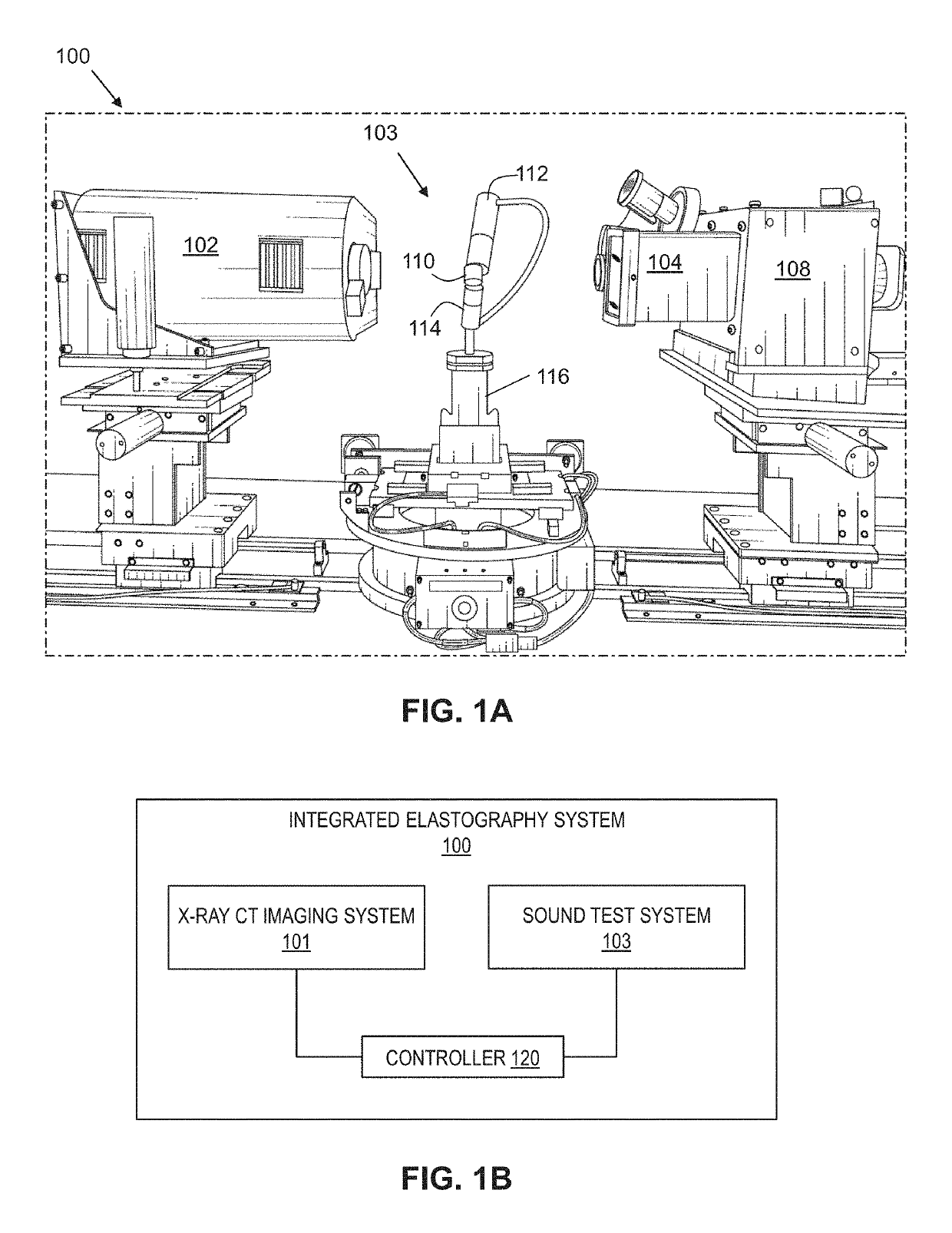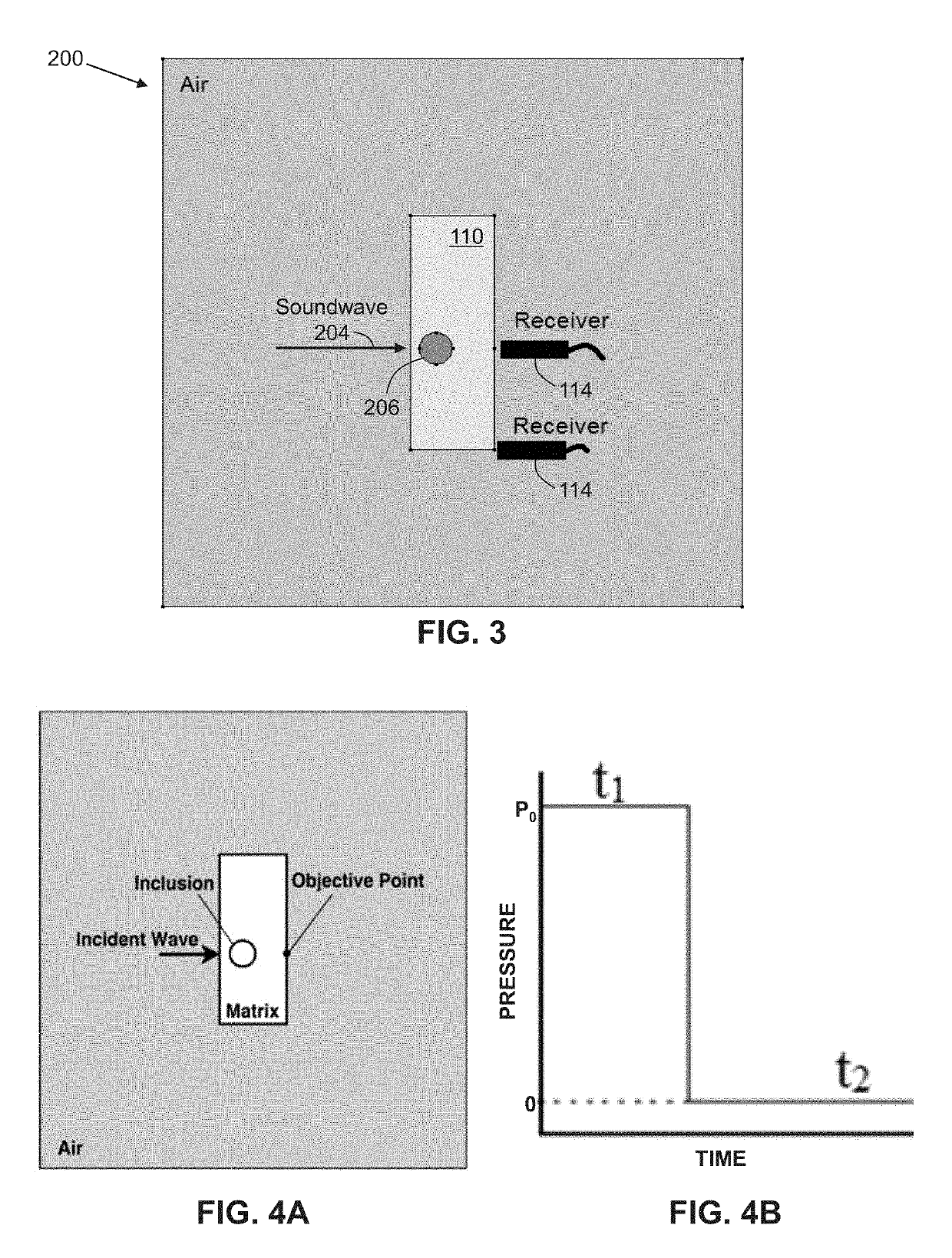Elastography based on x-ray computed tomography and sound wave integration
a computed tomography and x-ray technology, applied in the field of medical imaging and materials characterization, can solve the problems of low spatial resolution, image noise, and direct measurement based on images suffers
- Summary
- Abstract
- Description
- Claims
- Application Information
AI Technical Summary
Benefits of technology
Problems solved by technology
Method used
Image
Examples
simulation example 1
[0055]The following is a non-limiting example of a numerical simulation. It is to be understood that the example described herein is presented for illustrative purposes, and is not intended to limit the invention in any way. Equivalents or substitutes are within the scope of the invention.
Numerical Simulation
[0056]The finite element analysis (FEA) is a numerical method for solving problems of engineering and mathematical physics. FEA formulation of the problem results in a system of algebraic equations. The method yields approximate values of the unknowns at discrete number of points over the domain. To solve the problem, a large problem is subdivided into smaller parts that are called finite elements. The equations that model these finite elements are then assembled into a larger system of equations that models the entire problem. FEM then uses variational methods from the calculus of variations to approximate a solution by minimizing an associated error function.
[0057]In order to ...
simulation example 2
[0076]The following is another non-limiting example of a numerical simulation on real multiphase soft tissues. It is to be understood that the example described herein is presented for illustrative purposes, and is not intended to limit the invention in any way. Equivalents or substitutes are within the scope of the invention.
[0077]Numerical model creation and simulation were conducted on the commercial FEM package, Marc Mentat 2018.0.0 (64 bit) (MSC Software Corporation), with the assist of a Python script performing the factorial design, the parameter update and mathematical process. A brain slice was segmented into four regions and simulated as shown in FIG. 17. The model was meshed into 11261 four-node quadrilateral elements. The incident wave is the 50 Hz sine signal applied at four positions on the outer boundary denoted by arrows. As denoted by the black sold dots, twelve locations were chosen to detect the transmission with the sample rate of 400 / s. The acquisition duration ...
PUM
 Login to View More
Login to View More Abstract
Description
Claims
Application Information
 Login to View More
Login to View More - R&D
- Intellectual Property
- Life Sciences
- Materials
- Tech Scout
- Unparalleled Data Quality
- Higher Quality Content
- 60% Fewer Hallucinations
Browse by: Latest US Patents, China's latest patents, Technical Efficacy Thesaurus, Application Domain, Technology Topic, Popular Technical Reports.
© 2025 PatSnap. All rights reserved.Legal|Privacy policy|Modern Slavery Act Transparency Statement|Sitemap|About US| Contact US: help@patsnap.com



